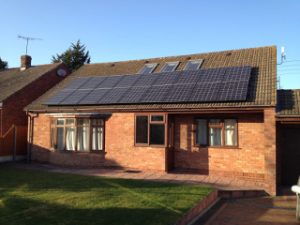 Solar PV panels are made up of individual solar cells that transform light into electrical energy, meaning that they release energy when exposed to sunlight. This photovoltaic process is based on a material that is present in almost all solar cells: silicon, a semiconductor with natural electrical properties.
Solar PV panels are made up of individual solar cells that transform light into electrical energy, meaning that they release energy when exposed to sunlight. This photovoltaic process is based on a material that is present in almost all solar cells: silicon, a semiconductor with natural electrical properties.
Silicon is the most prevalent element on Earth after oxygen which makes it a nearly inexhaustible natural resource. To make use of it for photovoltaic purposes, simple silica sand is transformed into pure crystalline silicon ingots. These ingots are sliced into thin wafers and made into solar cells. The solar cells are connected together and laminated between glass sheets to create a solar PV module or a panel. There are several types of solar cell, depending on the crystal structure and production method:
Monocrystalline solar cells
Polycrystalline solar cells
Thin film solar cells
Of these, polycrystalline or multi-crystalline solar cells are the easiest to manufacture, cheapest to produce and are currently the most used technology in the photovoltaic sector. Clear Solar uses solar PV panels from Trina, Kyocera, Suntech, Sanyo and Sharp Solar, all large manufacturers with established reputations for excellent quality, service and stability.
Measuring performance
When solar modules perform at their best it is called peak performance (or effective output) and denoted with a small âpâ behind the kilowatt measurement: kWpThe maximum possible output of a solar generator operating under standard conditions is defined as its peak output, which is measured in watts or kilowatts and stated as either Wp (watt, peak) or kWp, respectively.. This value indicates the performance of a solar module under full sun exposure and in defined testing conditions. Generally the actual performance is about 15-20lower.
